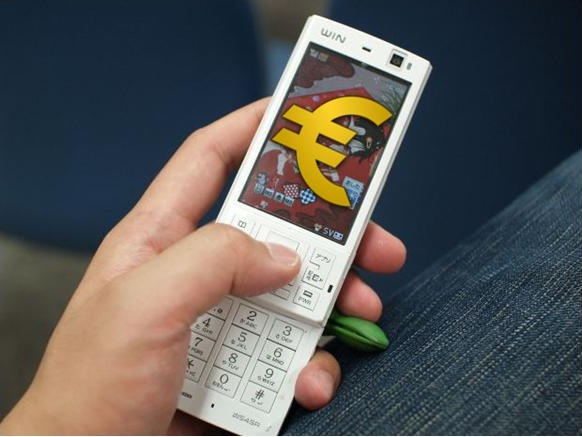The highly popular Google augmented reality using game tech will be used to create other apps.
Increasingly, users are proving that they love the AR mobile gaming experience and this is causing the technology to move forward extremely rapidly in order to be able to take advantage of the keen interest that consumers have, while the market remains somewhat limited.
Developers want to be among the first in order to make their names before the market is swamped.
Google’s Niantic Labs is a good example of one of the developers that has taken AR mobile gaming technology to an extremely successful level. In fact, the popularity of its massive game, Ingress, has shown that the world is ready to start playing with augmented reality on a more mainstream level. Though this came with a tremendous beta experience and has now been officially launched, there is another large potential for this success.
Though this particular app may not have an expanded future it will become an AR mobile gaming platform
 Despite the considerable success of this augmented reality game, Niantic Labs has expressed that it will be winding down the storyline of this game that changes the landscape of the real world into a global game experience of intrigue, mystery, competition.
Despite the considerable success of this augmented reality game, Niantic Labs has expressed that it will be winding down the storyline of this game that changes the landscape of the real world into a global game experience of intrigue, mystery, competition.
Soon, it will become a platform onto which other augmented reality using experience can be developed. Niantic Labs is already working on creating the kits that are necessary to give developers what they need to be able to create their own games that will use location information, with a chat layer, and if needed in game adds can also be included.
However, it should be noted that game developers shouldn’t get themselves too excited about coming up with their own AR mobile gaming experience quite yet, as Niantic still doesn’t have a predicted time by which the tools and kits will become available. It is all based on the team’s flexibility. Naturally, they are hoping that they will be released sooner, rather than later, but as of yet, there is no idea as to what the launch date is going to be.
A new survey has revealed that a growing number of companies in the E.U. accept payments via smartphones.
A new report has recently been released by yStats.com, a secondary market research company based in Hamburg, Germany, which has suggested that European mobile payments is a growing trend in the continent.
The report also pointed out that more companies are accepting transactions online, boosting regular e-commerce.
The “Europe Online Payment Methods 2013 – Second Half 2013” report showed that the use of smartphones for European mobile payments is growing in use for making traditional retail purchases in the E.U. countries as well as in other regions around the world. The report pointed out that the transactions being completed by way of smartphones and tablets has been increasing its share of the overall digital space, and that it is expected to make its way into the double digits by the year 2020.
In 2010, European mobile payments represented only 1 percent of all online forms of transaction.
 This will require an extremely rapid level of growth an adoption if it is to reach at least 10 percent of online transactions only a decade later. The reports data showed that this technology is making the biggest headway in Turkey, Spain, and the Netherlands, among countries located in Europe. This is particularly true in the use of smartphone banking. The highest traditional online banking – where it is above 80 percent, is in Norway, Finland, and the Netherlands.
This will require an extremely rapid level of growth an adoption if it is to reach at least 10 percent of online transactions only a decade later. The reports data showed that this technology is making the biggest headway in Turkey, Spain, and the Netherlands, among countries located in Europe. This is particularly true in the use of smartphone banking. The highest traditional online banking – where it is above 80 percent, is in Norway, Finland, and the Netherlands.
There is extremely promising growth being seen in European mobile payments and traditional online transactions in the mature markets of the central part of the continent. For example, in Germany, PayPal and invoice were the two most popular forms of B2C E-Commerce transaction methods. Furthermore, the smartphone paying method is starting to take off quickly in areas that have implemented terminals for parking or ticketing, with 10 percent of consumers having tried those technologies at least one time in 2012.
The report predicted that in the Western sub-region of the continent, the transaction value of European mobile payments will be growing by half in 2013 when compared to the year before.
 Despite the considerable success of this augmented reality game, Niantic Labs has expressed that it will be winding down the storyline of this game that changes the landscape of the real world into a global game experience of intrigue, mystery, competition.
Despite the considerable success of this augmented reality game, Niantic Labs has expressed that it will be winding down the storyline of this game that changes the landscape of the real world into a global game experience of intrigue, mystery, competition.
 This will require an extremely rapid level of growth an adoption if it is to reach at least 10 percent of online transactions only a decade later. The reports data showed that this technology is making the biggest headway in Turkey, Spain, and the Netherlands, among countries located in Europe. This is particularly true in the use of
This will require an extremely rapid level of growth an adoption if it is to reach at least 10 percent of online transactions only a decade later. The reports data showed that this technology is making the biggest headway in Turkey, Spain, and the Netherlands, among countries located in Europe. This is particularly true in the use of 